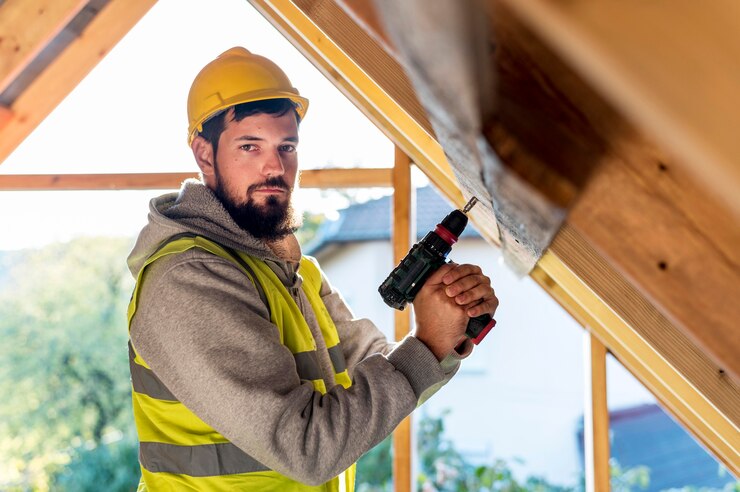Yes, home insurance may cover siding replacement. Now, let’s take a closer look at how home insurance policies can offer protection for your siding.

Siding provides an important layer of protection for your home, shielding it from harsh weather conditions and potential damage. However, it can still be susceptible to issues like hail damage, windstorms, or even accidental damage. In these cases, your home insurance may come to the rescue and cover the cost of siding replacement.
It’s important to review your insurance policy carefully to understand the specific coverage details and any limitations or exclusions that may apply. This way, you can ensure that your home and its exterior are adequately protected.
Understanding Home Insurance Coverage For Siding Replacement
Understanding Home Insurance Coverage for Siding Replacement
Importance Of Home Insurance Coverage For Various Damages
Home insurance serves as a vital protective shield against various unforeseen damages. From natural disasters like storms, hail, and wind, to accidental damages caused by fire or vandalism, home insurance provides homeowners with financial security. When it comes to your home’s siding, it’s essential to understand how your home insurance policy covers potential replacement costs.
Brief Overview Of Common Home Insurance Coverages
Home insurance policies typically offer different types of coverages, ensuring protection for different aspects of your property. Here’s a brief overview of common home insurance coverages that may be relevant to siding replacement:
- Dwelling Coverage: This coverage protects the structure of your home, including the siding, in the event of covered perils. If your siding is damaged due to a covered peril, such as a storm or fire, dwelling coverage may help cover the cost of replacing or repairing it.
- Extended Dwelling Coverage: Also known as “dwelling replacement cost,” this coverage ensures that your home can be rebuilt or repaired to its original condition, even if the replacement costs exceed the coverage limits of your basic dwelling coverage. If your siding requires complete replacement, extended dwelling coverage may come into play.
- Named Perils Coverage: Some home insurance policies only cover damages caused by specific perils mentioned in the policy. If your siding damage falls under the named perils, such as wind or hail, the insurance may provide coverage for replacement.
- All-Risk Coverage: Also known as comprehensive coverage, this type of policy protects your home against all risks, except for those specifically excluded in the policy. If your siding damage is caused by an event not excluded in your all-risk coverage, the insurance may cover the replacement costs.
It’s important to review your home insurance policy details to determine the specific coverages and their limitations. Different insurers may offer varying levels of coverage for siding replacement, so always consult your policy documents or discuss it with your insurance provider.
Remember, insurance claims for siding damage may also be subject to deductibles and coverage limits, so it’s crucial to understand these aspects in order to make informed decisions and protect your investment.
Typical Home Insurance Policies And Siding Replacement Coverage
When it comes to protecting your home, one of the essential components of your insurance policy is coverage for siding replacement. Siding serves as a protective barrier against the elements, enhancing the curb appeal and value of your property. In the event of damage to your siding, having appropriate insurance coverage can provide you with peace of mind.
Exploring Different Types Of Home Insurance Policies
Home insurance policies come in various forms, each offering a different level of coverage for siding replacement. It is crucial to understand the options available to you, so you can select a policy that suits your specific needs.
Here are three common types of home insurance policies:
- Hazard insurance: This type of policy generally provides coverage for damages resulting from specific hazards such as fire, lightning, or windstorms. While hazard insurance typically covers siding replacement, the extent of coverage may vary depending on the specific terms and conditions of your policy.
- All-risk insurance: Also known as comprehensive coverage, this policy offers broad protection for a wide range of risks and perils, unless specifically excluded. With all-risk insurance, your siding replacement costs may be covered, unless the damage is caused by a specific exclusion listed in your policy. It is essential to review your policy carefully to understand what is covered and what is not.
- Named-perils insurance: Unlike all-risk insurance, this type of policy specifies the perils covered. If your siding damage is caused by a peril listed in your named-perils insurance policy, you can typically expect coverage for the repair or replacement costs. However, it is important to note that perils not specifically mentioned in your policy will not be covered.
Specifics Of Coverage For Siding Replacement
When it comes to siding replacement coverage, it is crucial to understand the specifics of your insurance policy. Certain factors can affect the extent of coverage you receive.
1. Age of the siding
The age of your siding may impact the coverage provided. Older siding may qualify for a depreciated value, meaning the insurance company will only cover a portion of the replacement costs. On the other hand, if your siding is relatively new, you may be eligible for full replacement coverage.
2. Cause of damage
The cause of the siding damage plays a significant role in determining coverage. If the damage is caused by a covered peril such as a storm or fire, your insurance should cover the replacement costs. However, if the damage is due to lack of maintenance or wear and tear, it is unlikely to be covered by your policy.
3. Deductible and coverage limits
Review your policy to understand the deductible and coverage limits applicable to siding replacement. The deductible is the amount you need to pay out of pocket before your insurance coverage kicks in. Ensure that your coverage limits are sufficient to cover the full cost of repair or replacement in case of significant damage to your siding.
In conclusion, it is important to explore your options when it comes to home insurance policies and siding replacement coverage. Understanding the different types of policies available and the specifics of coverage will help you make an informed decision and ensure that your siding is adequately protected. Remember to review your policy carefully and consult with your insurance provider to clarify any doubts you may have regarding your coverage.
Factors Influencing Siding Replacement Coverage
When it comes to home insurance, understanding what is covered by your policy is essential. One aspect that homeowners often wonder about is whether their insurance will cover the replacement of siding. While the answer can vary depending on your specific policy, there are several factors that generally influence siding replacement coverage. These factors include the age and condition of the siding, the material used for the siding, and the types of damages covered by the policy.
Age And Condition Of The Siding
The age and condition of your siding play a significant role in determining whether it is covered by your home insurance policy. Insurance companies typically consider siding that is old or deteriorating to be part of regular home maintenance rather than an insurable event. If your siding is in good condition and relatively new, there is a higher chance of your insurance policy covering its replacement in the event of damage.
Material Used For The Siding
The material used for your siding can also affect whether it is covered by your insurance policy. Different materials have varying durability and susceptibility to damage. For example, vinyl siding is known to be more resistant to weather damage compared to wood siding. Insurance policies may have specific provisions for certain types of siding materials, and coverage for replacement may vary depending on the material used.
Types Of Damages Covered By The Policy
Your home insurance policy will outline the specific types of damages that are covered. Generally, policies cover damages caused by covered perils such as fire, vandalism, or severe weather events like storms. However, if the damage to your siding is caused by wear and tear, lack of maintenance, or gradual deterioration, it may not be covered by your policy. It’s important to carefully review your insurance policy and understand the specific damages that are covered.
In conclusion, while home insurance coverage for siding replacement will depend on your policy, there are common factors that influence whether or not it is covered. These factors include the age and condition of the siding, the material used for the siding, and the types of damages covered by the policy. By understanding these factors and reviewing your insurance policy, you can better determine if your siding replacement will be covered in the event of damage.

Credit: www.acroof.net
Common Siding Damages Covered By Home Insurance
Using bulleted lists, I will write an engaging section about the common siding damages covered by home insurance.
When it comes to protecting your home, having the right insurance coverage is crucial. Home insurance is designed to provide financial protection in the event of damage to your property. While many homeowners are aware that home insurance covers damages caused by events such as fires and storms, there is often uncertainty when it comes to siding replacement coverage. In this article, we will explore the common siding damages covered by home insurance.
Storm Damage And Siding Replacement Coverage
One of the most common siding damages is caused by severe weather conditions, such as storms. During a powerful storm, siding can become dislodged, cracked, or even completely torn off. Fortunately, most home insurance policies cover these damages and provide coverage for siding replacement.
- High winds: When strong winds hit your home, they can cause siding to break or become loose. If your home’s siding is damaged by high winds, your insurance policy should cover the cost of repairs or replacement.
- Hail damage: Hail can be incredibly damaging to siding. It can cause dents, cracks, and fractures. If your home is hit by hail and your siding is damaged, your home insurance policy should cover the cost of repairs or replacement.
- Severe storms: Severe storms, including hurricanes and tornadoes, can cause extensive siding damage. If your home is affected by a severe storm and your siding is damaged, your insurance policy should cover the necessary repairs or replacement.
Fire And Smoke Damage And Siding Replacement Coverage
Another common type of damage that can affect your siding is related to fire and smoke. Fires can spread quickly and cause significant damage to both the interior and exterior of a home, including the siding. Fortunately, most home insurance policies provide coverage for fire and smoke damage, including the replacement of damaged siding.
- Fire damage: If your home is damaged by a fire and your siding is affected, your insurance policy should cover the cost of repairs or replacement. This can include not only the visible damage but also any structural damage that may have occurred.
- Smoke damage: Even if your home does not sustain direct fire damage, smoke can still cause significant harm to the siding. The smell of smoke can permeate the siding, leaving behind unpleasant odors. In such cases, home insurance policies typically cover the cost of remediation or replacement of the affected siding.
It is important to keep in mind that specific coverage may vary depending on your insurance policy and the terms and conditions outlined in it. It is highly recommended to review your policy carefully and consult with your insurance provider to understand the extent of your coverage when it comes to siding replacement.
Claims Process For Siding Replacement Coverage
Documenting The Damages And Filing A Claim
When it comes to getting your home’s siding replaced under your home insurance policy, the first step is documenting the damages and filing a claim. It’s crucial to provide your insurance company with all the necessary documentation and information to support your claim and ensure a smooth claims process. Here’s what you need to do:
- Inspect and document the damages: Start by carefully inspecting your siding for any signs of damage, such as cracks, holes, or severe weather-related issues. Take clear and detailed photographs of the damages to provide visual evidence to your insurance company. Make sure to document the date and time of the incident as well.
- Compile important documents: Gather all relevant documents, such as your home insurance policy, policy number, and contact information for your insurance provider. It’s also helpful to keep records of any previous maintenance or repairs done on your siding.
- Contact your insurance company: Reach out to your insurance company as soon as possible to report the damages and initiate the claims process. Provide them with the necessary information, including the documentation and photographs you have collected. Be sure to keep a record of your conversation, including the date, time, and the name of the representative you spoke with.
- Follow the claims process: Your insurance company will guide you through the claims process, which may include providing additional information or documentation, meeting with an insurance adjuster, or scheduling an inspection of the damages. It’s important to promptly respond to any requests or inquiries from your insurance company to ensure a smooth process.
Working With Insurance Adjusters For Siding Replacement Coverage
After filing a claim for your home’s siding replacement coverage, you may need to work with insurance adjusters to assess the damages and determine the coverage amount. Insurance adjusters are trained professionals who evaluate the extent of the damages and calculate the cost of repairs or replacement. Here’s what you can expect when working with insurance adjusters:
- Scheduling the adjuster’s visit: Once your claim is submitted, your insurance company will schedule a visit from an adjuster to assess the damages. The adjuster will typically contact you to arrange a suitable date and time for the inspection.
- Meeting the adjuster: During the inspection, the adjuster will thoroughly examine the siding damages and may take additional photographs or measurements as needed. It’s important to be present during this inspection to answer any questions the adjuster may have and provide any additional information or documentation.
- Providing necessary documentation: The adjuster may request supporting documentation, such as estimates from siding contractors or invoices for previous repairs, to validate the claim. It’s crucial to provide these documents promptly to avoid any delays in the claim settlement process.
- Reviewing the adjuster’s report: After the inspection, the adjuster will prepare a detailed report outlining the findings and proposed coverage amount for the siding replacement. Review this report carefully and ensure that all damages and necessary repairs are accurately documented.
Frequently Asked Questions On Does Home Insurance Cover Siding Replacement
Will Insurance Cover Rotted Siding?
Yes, insurance may cover rotted siding, but it depends on the specific policy and the cause of the damage. Review your policy or contact your insurance provider for more information.
Which Two Are Not Covered By Homeowners Insurance?
Homeowners insurance typically does not cover flood and earthquake damage.
What Home Repairs Do Most Insurance Cover?
Most insurance policies cover common home repairs such as roof leaks, plumbing issues, electrical problems, and structural damage, but it’s important to review your specific policy to know exactly what is covered.
How To Get Aluminum Siding Replaced By Insurance?
To get aluminum siding replaced by insurance, follow these steps: 1. Contact your insurance company to report the damage and file a claim. 2. Provide documentation, such as photos and a written estimate, to support your claim. 3. Schedule an inspection with your insurance adjuster to assess the extent of the damage.
4. Work with your insurance company to select a reputable contractor for the replacement. 5. Ensure that the contractor follows the insurance company’s guidelines and completes the necessary paperwork.
Conclusion
Home insurance may cover siding replacement depending on the specific policy and circumstances of the damage. It is essential to review your policy details and consult with your insurance provider to clarify coverages. Taking proactive measures to maintain and upkeep your siding can help prevent costly repairs in the future.
Understanding your policy and staying informed can ensure you make the right decisions to protect your home and investment.




